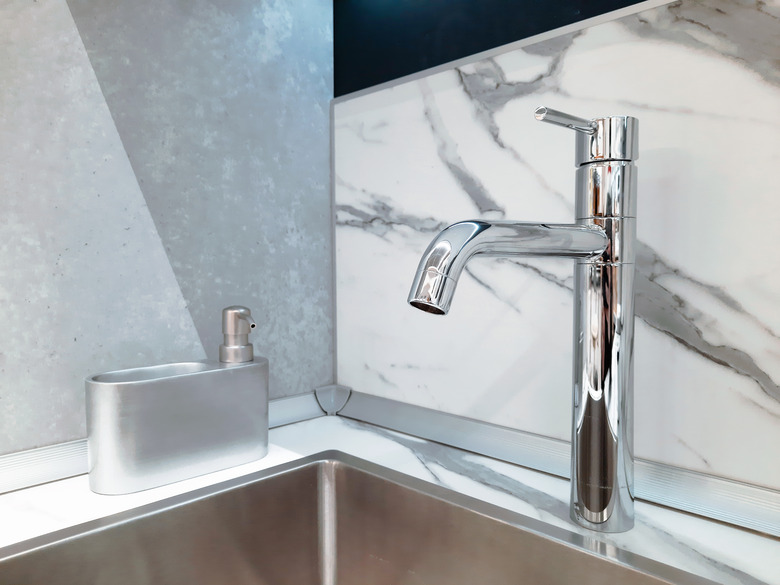How To Tighten Chrome Fittings Without Scratching Fixtures
Chrome is timeless. It gleams, it's beautiful, and it provides an elegance to any bathroom. But it also scratches really easily — so if you're not careful when you're putting in your plumbing fixtures, you might scuff up the chrome. Luckily, it's not hard to prevent such damage, provided you do a little planning before you reach for the adjustable wrench.
Tip
Metal on metal can lead to scratches, so as long as you've got something soft between the fixture and the wrench when you tighten chrome fittings, you'll avoid scratches.
Why Is Chrome So Scratchable?
Part of the reason chrome can be so vulnerable to scratching is that it's just a plating applied over a base metal. From your plumbing fixtures to car parts to cutlery, a chrome finish is essentially achieved through electroplating. The manufacturer applies an electrical charge to chromium anhydride, which then bonds with the surface of whatever type of metal is being plated.
The trouble is that there's "decorative" versus "hard" chrome plating, and the latter tends to be used for more industrial purposes. Decorative chrome is extremely common — and it's very thin, which is why it's important to be careful when working with chrome fixtures. It's not uncommon for the chrome finish to separate and peel off the base metal when it's mishandled over time.
Decorative chrome plating ranges between as little as 0.05 micrometers thick to a generous 0.5 micrometers. Either way, the plating is far thinner than a sheet of paper, so keep that in mind.
How to Tighten Chrome Fittings Without Damage
If metal on metal will scratch a finish, then the answer is to not have metal touch metal, right? All you need to do to avoid scratching your chrome fittings is to make sure you've got a proper wrench — an adjustable wrench for a snug fit so it doesn't keep slipping off. And you'll need something in between the wrench and the fitting.
The best thing to use is something that can help grip too — like a thin slip of silicone or a microfiber cloth. The trick with a cloth or rag is similar to that of trying to get a lid off a jar; a damp cloth has more "grip" than a dry cloth does, so get it a bit wet and wring it out before you put it over the fixture. In a pinch, things like duct tape or electrical tape will work, but then you'll have to fuss about with removing stuck-on adhesive. Get creative — even a silicone muffin cup will work wonders for gripping and protective purposes.
Whatever the case, adjust your wrench for a snug fit over the cloth or silicone and tighten the fitting, but never tighten it too much. When you're feeling resistance, it's tight enough. The last thing you want is to overtighten and then have the fitting seize in place. Once you're through, polish the chrome to a shine using chrome polish; your microfiber cleaning cloths might polish it up too.
